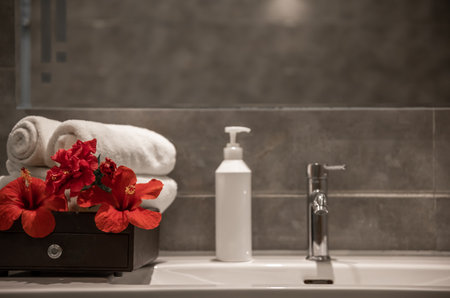Understanding Your Bathroom Tiles
Before you dive into cleaning, it’s essential to recognize the type of tiles you have in your bathroom. In American homes, ceramic, porcelain, natural stone (like marble or travertine), and glass tiles are the most common choices. Each material has its own unique texture, finish, and level of durability. Why does this matter? The right maintenance routine depends on the tile type—what works for glossy ceramic might harm delicate marble or leave streaks on glass. Taking time to identify your bathroom tiles ensures that you use the right cleaners and techniques, protecting both their look and longevity. Understanding your tiles is the first step toward keeping them beautiful and functional for years to come.
2. Daily Habits for Tile Maintenance
Daily care is the secret to keeping your bathroom tiles looking as good as new. By building a few simple habits into your daily routine, you can prevent soap scum, mildew, and grime from taking hold. Here are easy-to-follow steps that make a big difference:
Quick Wipe-Downs
After every shower or bath, use a microfiber cloth or squeegee to wipe down tile surfaces. This helps prevent water spots and soap residue from building up.
Ventilate Your Bathroom
Moisture is the enemy of clean tiles. Always run your exhaust fan or open a window after using the shower to reduce humidity and discourage mold growth.
Tile Maintenance at a Glance
| Habit | Why It Matters |
|---|---|
| Wipe Tiles Daily | Keeps surfaces dry and prevents buildup |
| Ventilate After Showering | Reduces moisture and discourages mildew |
| Spot Clean Spills | Stops stains before they set in |
Pro Tip:
If you notice any spills or splashes—like shampoo drips or toothpaste—wipe them up right away with a damp cloth. Quick attention keeps grout lines bright and surfaces spotless. Consistent, minimal effort goes a long way toward maintaining a fresh, modern look in your bathroom tiles every day.

3. Deep Cleaning Techniques
For spotless bathroom tiles, deep cleaning is essential. Start by choosing a cleaner that matches your tile material—ceramic, porcelain, or natural stone. For most tiles, a mix of warm water and mild dish soap works wonders. Apply the solution with a soft sponge or microfiber cloth to avoid scratching the surface. For tougher stains and grout buildup, opt for a specialized tile cleaner or a paste made from baking soda and water. Scrub gently using a soft-bristle brush; steer clear of harsh abrasives that can damage your tiles’ finish.
If you’re fighting mildew or mold, use a solution of one part white vinegar to one part water. Spray it directly onto the affected areas, let it sit for 5–10 minutes, then rinse thoroughly. For extra protection and shine, consider applying a tile sealant after cleaning—especially on natural stone or unglazed tiles.
Always ventilate your bathroom during and after cleaning to help surfaces dry faster and prevent moisture buildup. And remember: never mix cleaning products containing bleach and ammonia, as this can release harmful fumes. By sticking to these safe, effective methods and products, you’ll keep your bathroom tiles looking fresh without risking damage.
4. Tackling Grout Like a Pro
When it comes to bathroom tiles, grout lines are often overlooked—but they make all the difference between a tired space and a truly polished one. Over time, grout can discolor, collect mildew, or even crack. Here’s how to restore and maintain those lines for that crisp, fresh-from-the-showroom look.
Cleaning Grout: The Essentials
| Step | What You Need | How-To |
|---|---|---|
| 1. Dry Brushing | Grout brush or old toothbrush | Sweep away loose dirt before wet cleaning. |
| 2. Deep Clean | Baking soda, vinegar, water | Make a paste with baking soda and water; apply to grout lines. Spray with vinegar, let fizz, then scrub gently. |
| 3. Rinse & Wipe | Damp cloth | Wipe off residue for a clean finish. |
Pro Tips for Stubborn Stains
- If stains persist, try a hydrogen peroxide solution for tough spots—just test in an inconspicuous area first.
- Avoid bleach on colored grout; it can cause fading or damage.
Maintaining That Fresh Look
Once your grout is spotless, consider applying a grout sealer every six months. This barrier keeps moisture and grime out while making routine cleaning much easier.
Quick Maintenance Checklist
- Squeegee tiles after showers to minimize buildup.
- Spot-clean spills promptly to prevent staining.
- Add weekly grout checks to your cleaning routine for long-lasting shine.
Caring for your bathroom tile grout isn’t just about cleanliness—it’s about creating a space that feels considered and complete. With these simple steps, you’ll keep your bathroom looking sharp and elevated year-round.
5. Stain Removal Strategies
Stubborn stains and watermarks can make even the most beautiful bathroom tiles look dull and neglected. Tackling them doesn’t require harsh chemicals or professional help—just smart techniques and a few household supplies. For everyday stains, start with a simple mix of baking soda and water. Apply it as a paste directly onto the stain, let it sit for 10-15 minutes, then gently scrub with a soft brush. This method is tile-safe and effective for soap scum, toothpaste marks, and light discoloration.
Tackling Tough Watermarks
Hard water spots often leave unsightly white streaks on tiles and grout lines. To remove them, spray a solution of equal parts white vinegar and warm water onto the affected areas. Allow it to soak in for several minutes before wiping clean with a microfiber cloth. For persistent marks, repeat the process or lightly buff with a non-abrasive sponge.
Dealing With Mold and Mildew
If you notice black or green mold patches, act fast. Mix hydrogen peroxide with water (1:1 ratio), apply to the grout, and let it fizz for five minutes before scrubbing gently. Avoid bleach on colored grout—it can cause fading.
Pro Tip: Prevention Is Key
After each cleaning session, dry your tiles with a towel to prevent new stains from forming. Regular upkeep makes deep-cleaning less frequent—and keeps your bathroom looking fresh every day.
6. Preventing Mold and Mildew
Mold and mildew are common headaches in American bathrooms, thanks to the constant presence of moisture. To keep your bathroom tiles looking fresh and healthy, it’s essential to understand how to manage humidity and prevent these unwelcome guests from taking hold.
Keep Moisture Under Control
Start by making ventilation a priority. Use an exhaust fan every time you shower or bathe, and leave it running for at least 15-20 minutes afterward. If your bathroom has windows, open them whenever possible to promote airflow. These simple habits help reduce condensation on your tiles and grout lines.
Wipe Down Surfaces
After using the shower, take a moment to squeegee or wipe down tile surfaces with a microfiber cloth. This small step makes a big impact by removing lingering water that can lead to mold growth. Pay extra attention to corners and edges where moisture tends to accumulate.
Address Leaks Promptly
Regularly inspect your bathroom for leaks around faucets, showerheads, or pipes. Even minor drips can create the perfect environment for mold if left unaddressed. Fix issues promptly to keep your space dry and safe.
Choose Mold-Resistant Products
When renovating or maintaining your bathroom, opt for mold-resistant grout and caulking products. These specialized materials help block mold spores from settling in the first place, giving you an extra layer of protection.
Routine Cleaning is Key
A consistent cleaning routine keeps mold at bay. Use a mild cleaner weekly, focusing on grout lines where mold loves to hide. For stubborn areas, try a mixture of white vinegar and water—a natural solution that breaks down buildup without harsh chemicals.
By staying proactive about moisture control and cleanliness, you’ll maintain beautiful bathroom tiles that are both stylish and healthy for years to come.
7. Long-Term Care and Sustainability
Adopting eco-friendly habits isn’t just a trend—it’s a lifestyle choice that supports the longevity of your bathroom tiles and the planet. For lasting beauty, choose gentle, non-toxic cleaners and natural materials like baking soda or white vinegar for routine cleaning. These alternatives are tough on grime but easy on the environment and your tile surfaces. When mopping, use microfiber cloths or reusable pads to reduce waste. If you need to replace grout or broken tiles, opt for products with recycled content or low-VOC adhesives to keep indoor air fresh. Regularly inspect for mold and address leaks quickly—preventing water damage is key to sustainability and style. By integrating these mindful choices into your cleaning routine, you extend the life of your bathroom tiles while cultivating a home that’s both chic and environmentally responsible.


